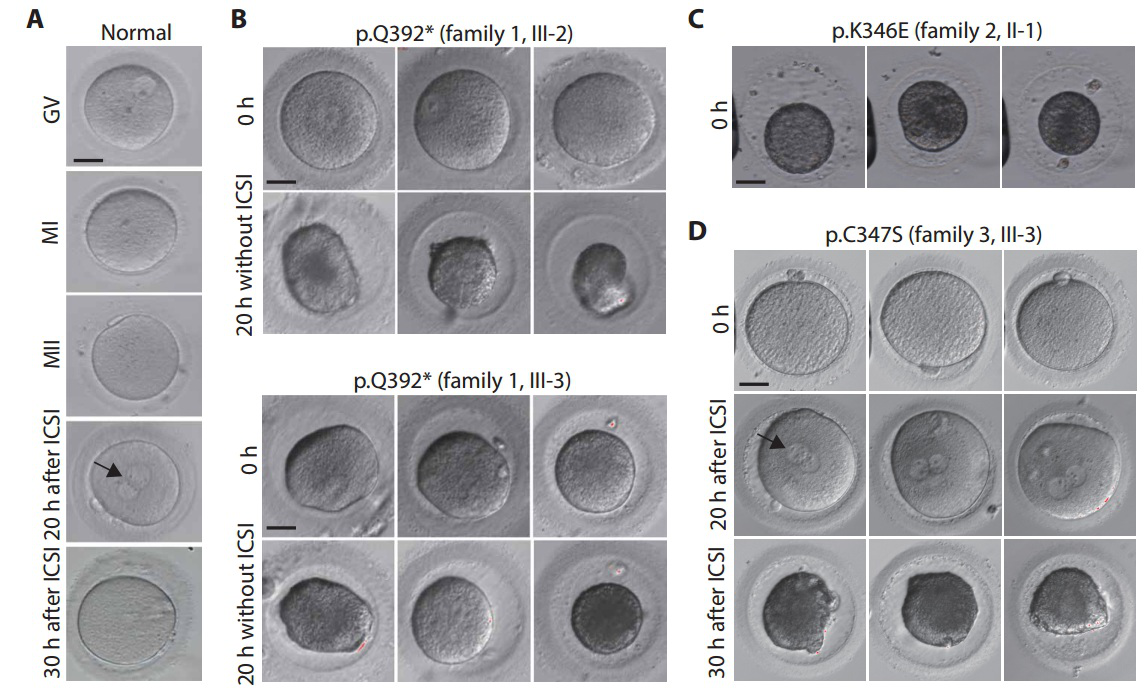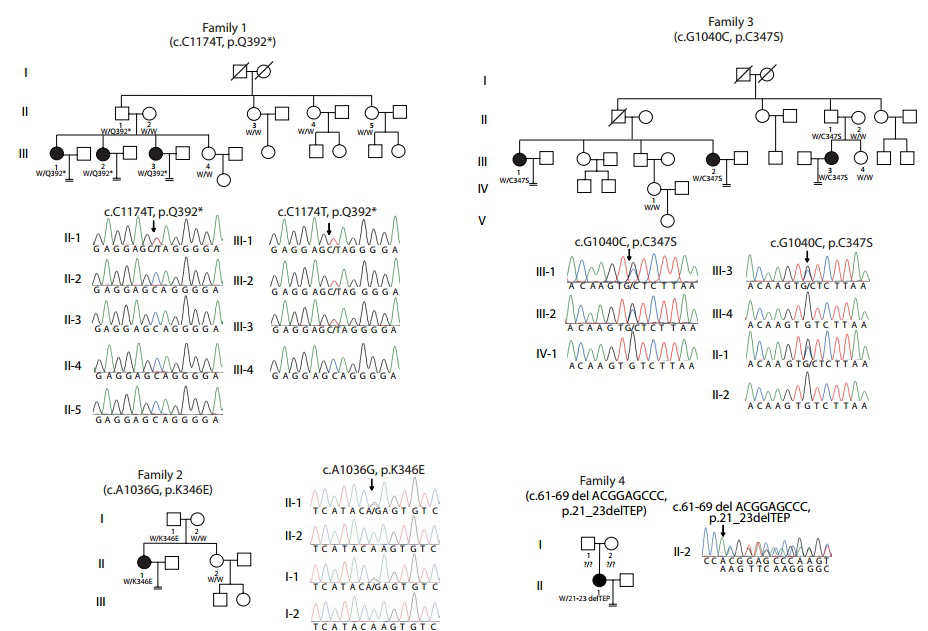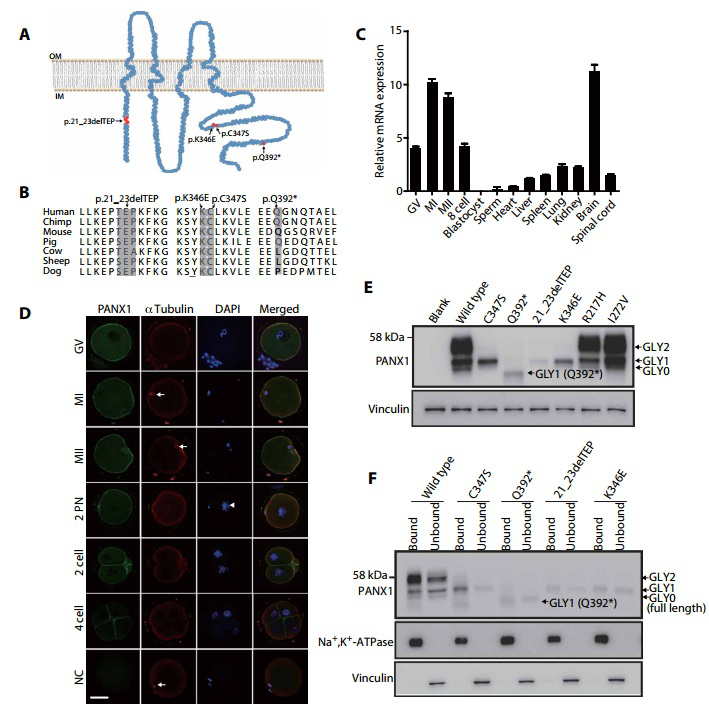Researchers from the Ninth People's Hospital (Shanghai Jiuyuan), Northwest Women's and Children's Hospital, Fudan Biomedical Research Institute, Fudan University Obstetrics and Gynecology Hospital, and the Institute of Neurology of the Chinese Academy of Sciences, Shanghai Jiao Tong University School of Medicine, for the first time named a brand new Mendel's genetic disease (egg death) is clarified in models such as cultured cells, Xenopus oocytes, mouse oocytes, and overexpressed engineered mice derived from mutations in one patient (Q392*). The pathogenesis suggests that PANX1 mutations affect protein glycosylation, channel activation, and ATP release, and the disease is also the first ion channel disease associated with PANX1 family members.
In 2003, Professor Yanping Kuang from the Department of Assisted Reproductive Medicine of the Ninth People's Hospital of Shanghai Jiao Tong University School of Medicine discovered a strange case in artificial fertilization (IVF): patient sex hormone levels, number of eggs taken, egg morphology and in vitro Fertilization was normal, however, all embryos developed blackening, shrinking and degeneration from the second day of fertilization.

They then discovered two separate families with similar phenotypes (family 2 and family 3), one of which (family 2), within 20 hours of egg removal, showed blackening, atrophy and degeneration without fertilization. At the same time, a team of professors from the Reproductive Center of the Northwest Women's and Children's Hospital, Professor Juanzi, also found similar cases (family 1).

At the time, no medical literature reported describing the disease, and the causes and mechanisms of the disease were even more unknown. In 2015, Professor Yan and the group of Lei Wang and Qing Sang of Fudan University conducted a survey, and the joint research team named the new disease “oocyte deathâ€.
On March 27, 2019, the joint research team published the latest paper entitled "A Pannexin 1 Channelopathy Causes Human Oocyte Death" in Science Translational Medicine, and found that infertile women from four independent families with egg deaths carry varying degrees. The PANXI mutation, which is consistent with Mendelian dominant inheritance, officially included this egg death syndrome in the Mendelian genetic disease.
Whole-genome sequencing analysis of patients with family 1 and family 3 and their mothers revealed that PANX1 gene is the only mutation associated with one infertile patient in the family. As for family 3, the heterozygous missense mutation of PANX1 gene is unique. A mutation associated with its infertility. Both family mutations are derived from their father.

qRT-PCR analysis indicated that PANX1 was most expressed in human oocytes, 8 cell embryos and brain (compared to other somatic tissues). The researchers also used immunofluorescence to explore their subcellular localization. Early PANX1 was mainly localized to the cell membrane or cell interface of human oocytes and fertilized eggs, suggesting that PANX1 may have important physiological functions on egg cell membranes and early embryos.

PANX1 has three glycosylation states: non-glycosylated protein (GLY0), high mannoprotein (GLY1), and fully mature glycoprotein (GLY2). Cell and egg function experiments have shown that mutations alter the PANX1 glycosylation pattern, and altered glycosylation patterns are closely related to disease. In vitro mouse eggs, Xenopus egg cells analysis, mutations also caused abnormal activation of PANX1 channel, accelerated the release of ATP inside the egg, the cells showed a pathogenic phenotype.
In the mutant mouse model, the four point mutations had no significant effect on the fertility of the mice. In human eggs, the expression of PANX1 was significantly higher than that of the eggs. Researchers speculate that differences in expression may be responsible for the lack of infertility phenotype in genetically modified mice.
Thus, researchers commissioned Cyagen biological (Cyagen Biosciences) constructed Q392 * mutant overexpression patient a murine model system, these mice are generated by homologous recombination mediated CRISPR-Cas9. The guide RNA sequence is CTCCAGTCTTTCTAGAAGATGGG targeting intron 1 of the murine Rosa26 gene, a set of linearized donor vectors comprising the ZP3-human wild type or PANX1 mutant (C1174T) cDNA poly(A), which is shared with Cas9 mRNA. The mouse is fertilized to produce a target KI offspring. The F0 parental animals were subjected to PCR identification and sequencing analysis, and the wild type mice were subjected to germline transmission and F1 progeny tests.
The mutant murine model generally exhibited an infertility phenotype as expected compared to the egg-specific expression of wild type mice.
The results of the study not only pointed out the pathogenic mutation and pathogenic mechanism of the "oval death" disease, but also provided the first disease mouse model to study the pathological function of PANX1 , which expanded the human Mendelian genetic disease map, suggesting human eggs and Early embryos may hide a large number of previously unknown new genes, laying the foundation for genetic counseling and assisted reproductive precision medicine for related patients.
Original Search: A Pannexin 1 Channelopathy Causes Human Oocyte Death
Medical Gauze,Cotton Bandage Roll,Absorbent Gauze Roll,Medical Gauze Rolls
Surgimed Medical Supplies Co.,Ltd , https://www.surgimedcn.com